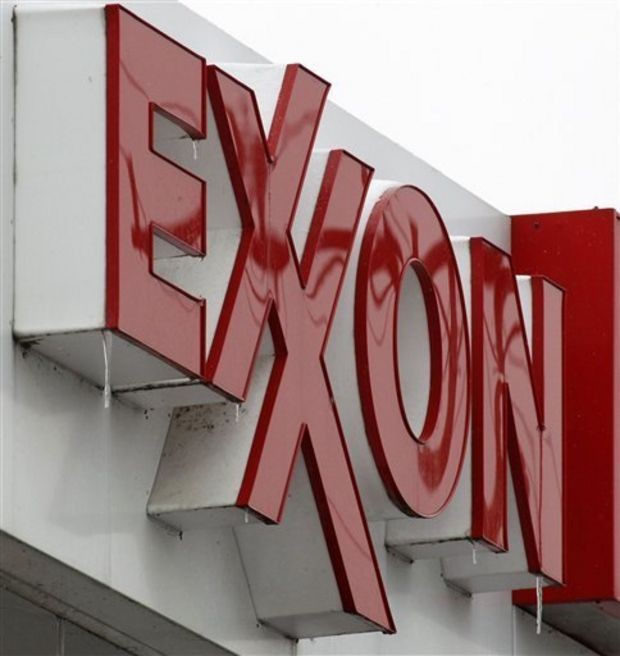The Exxon Puzzle Betting the Business
Post on: 18 Май, 2015 No Comment

The Exxon Puzzle
Exxon doesn’t use derivatives. At least not many of them. This is in strong contrast with a number of other oil majors that make active use of derivatives—for example, BP and Shell.
This fact is a real puzzle for those who argue that companies should use derivatives to hedge the financial risks coming from their physical business. Since we are among the advocates of hedging, we take the puzzle seriously. We’ll come back to that shortly.
This fact also stands as a rebuke to some of the opponents of reforming the OTC derivatives markets who misrepresent the connection between derivatives trading and the physical business of many end-user companies. More on that later, too.
First, the numbers. Although it is well known within the industry that Exxon avoids using derivatives, it’s nevertheless worthwhile to see how this fact is manifested in the reported financial statements. Here’s a condensed version of Exxon’s 2009 balance sheet with the derivative portion highlighted:
The net derivatives position equals approximately 4 one-thousandths of 1% of Exxon’s equity. [One has to be cautious about using a net liability figure, since this can underestimate the significance of the derivatives position. But our understanding of US accounting rules (aided by unnamed sources with actual knowledge of accounting) is that if the gross positions had been material, Exxon would have had to disclose them. That, plus other knowledge of Exxon, leads us to believe this net figure is probably not misleading.]
Here’s a condensed version of Exxon’s 2009 income statement with the derivative portion highlighted:
The net loss of reduced Exxon’s income before tax by less than 2 tenths of 1%.
Exxon’s 10K declares, “The fair value of derivatives outstanding at year-end 2009 and loss recognized during the year are immaterial in relation to the Corporation’s year-end cash balance of $10.7 billion, total assets of $233.3 billion or net income for the year of $19.3 billion.” It goes on, “The Corporations limited derivative activities pose no material credit or market risks to ExxonMobils operations, financial condition or liquidity.”
We can contrast these numbers with those for Shell and BP, two competitors that make much more active use of derivatives.
Here’s a condensed version of Shell’s 2009 balance sheet with the derivative portion highlighted:
Derivatives equal 7% of Shell’s assets and more than 6% of its liabilities plus equity. The net derivatives position is more than $1.7 billion, or slightly more than 1% of equity.
Here’s a condensed version of Shell’s 2009 income statement with the derivative portion highlighted:
Shell’s net losses before tax on its derivative positions equaled $2.8 billion. This reduced its income before taxes by nearly 12%.
Here’s a condensed version of BP’s 2009 balance sheet with the derivative portion highlighted:
Derivatives equal nearly 4% of BP’s assets and 4% of its liabilities plus equity. The net derivatives position is $777 million, or slightly less than 1% of equity.
Here’s a condensed version of BP’s 2009 income statement with the derivative portion highlighted:
In 2009, BP’s made a gain on its derivative positions equaling $3.7 billion. This amounted to nearly 15% of its income before taxes that year.
The stark contrast between Exxon’s and its competitors’ use of derivatives is instructive. The difference flows from a couple of distinct choices that happen to combine together to create this stark contrast. To understand the distinct choices, let’s begin with a brief taxonomy distinguishing two broad sets of activities using derivatives.
One set we will call financial. This set of activities is more often associated with investment banks and other financial institutions, but an oil company can also operate a financial institution within the parent holding structure. We’ll highlight two activities out of the set we’re calling financial. One is acting as a market maker or derivatives dealer to other companies, and often is wrapped together with the selling of risk management services. The second is constructing a portfolio of proprietary trades: buying derivatives and other financial instruments that the company believes are undervalued, and selling those it believes are overvalued.
The second set we will call hedging. The need to hedge arises from the company’s own physical investments in oil fields, refining operations, storage and shipping, etc. which expose the company to key market risks such as the fluctuating price of oil and gas, fluctuating exchange rates, and fluctuating interest rates, among others. Exposure can be offset or hedged if the company buys or sells an appropriate package of futures, options and other derivatives written on the relevant risk variables.
Exxon does neither set of activities using derivatives. At least that’s how it represents itself, and that’s what shows up in its financial statements for 2009. The 10K disclosure reads that
“…the Corporation makes limited use of derivative instruments to mitigate the impact of [changes in interest rates, currency rates and commodity prices]. The Corporation does not engage in speculative derivative activities or derivative trading activities nor does it use derivatives with leveraged features.”
Exxon’s choice in this matter is familiar to all in the industry.
BP and Shell do both sets of activities using derivatives, and it is the combined activity that shows up in their financial statements. BP’s 2009 report states that
“The group enters into derivatives in a well established entrepreneurial trading operation. In addition, the group has developed a control framework aimed at managing the volatility inherent in certain of its natural business exposures.”

Elsewhere, it reads
“The group uses derivative financial instruments to manage certain exposures to fluctuations in foreign currency exchange rates, interest rates and commodity prices as well as for trading purposes.”
Shell’s 2009 report is clear about its hedging activities.
“Shell uses derivatives in the management of interest rate risk, foreign currency risk and commodity price risk, and in the management of foreign currency cash balances.”
But its report is less forthcoming on the financial activities it pursues which employ derivatives—its market making and dealer business, and it proprietary trading portfolio. Its report states that
“Certain subsidiaries have a mandate to trade natural gas, electrical power, crude oil, refined products, chemical feedstocks and environmental products, and to use commodity swaps, options and futures as a means of managing price and timing risks arising from this trading.”
This suggests an extension of Shell’s physical business into trading the physical goods, with financial derivatives continuing to be relegated exclusively to hedging the risk arising from the business in physicals. But Shell’s role as a provider of risk management services and as a derivatives dealer is reported on the website of its Shell Trading (US) Company, and is well known in the industry.
What do we make of Exxon’s decision to shun derivatives, in both financial activities and as a tool for hedging its commercial risk? The lessons are different for the two uses of derivatives.
Exxon’s ability to profitably explore, produce, ship and refine huge quantities of oil without packaging these activities together with a prop trading desk and a derivative dealing business demonstrates that the physical side of the business is organizationally separable from these financial activities. While these financial activities may play a useful role for the industry as a whole, this useful role can be carried out using separate business units that are subject to appropriate financial regulations. The physical business will not be undermined. This Exxon counterexample reinforces the point we have made in an earlier post that financial activities like prop trading and derivative dealing are separate activities from an energy company’s physical activities.
Exxon’s decision to shun derivatives as a tool for hedging the market risks in its physical business is more puzzling. All of the theories of hedging apply to Exxon as well as to any other firm. They are theories about how to maximize shareholder value in the face of market risks that can easily impact a company’s cash flow. Exxon is not immune to these market risks – certainly no more immune than Shell or BP. One would be hard pressed to establish a reasonable basis in the companies’ underlying fundamentals that makes sense of their different hedging choices in terms of the prevailing theories for hedging.
The Exxon puzzle is actually just one example of a more general phenomenon: there is much more variation in company hedging strategies than we can make sense of with the current academic theories of hedging. Company strategies vary enormously. Our theories can explain some variation, but reality presents us with more variation than we can account for.
There are a number of ways to resolve the Exxon puzzle. One is to improve our set of theories for hedging so that we begin to reflect whatever are the underlying fundamentals that do account for such diverse strategies. A second is to uncover some overlooked differences between Exxon, on the one hand, and Shell, BP and other hedgers on the other hand, in terms of the fundamentals driving a hedging strategy.
There is a third alternative, and it’s our current working hypothesis. We believe that the actual financial strategies of Exxon and Shell and BP with respect to hedging market risks may turn out to be much more similar than the accounting statements and industry lore suggest. Derivatives are a specific form of financial contract used to achieve a given financial exposure to market risks. But the same exposure can be manufactured by other financial as well as commercial arrangements. An example of an alternative to a swap contract (derivative markets) is borrowing and lending in the money market (cash market). Forward and option arrangements can also be created along the supply chain where risk can be sliced and shared with the various parties dealing with a company. We imagine that if we were able to dig deeply enough into some of the other commercial arrangements by which Exxon manages its financial affairs, we would find that it achieves some of the same objectives by these other means. We don’t have any specific documentation for this. It’s just a working hypothesis. But it is a hypothesis that implies very different anthropological and organizational constructs: one relies on financial intermediaries and is based on outsourcing the risks to these agents; the other, relies on in-house design and execution of risk management, and is based on contracts with commercial relationships.
Right now, the puzzle stands. It’s a challenging one to work on.














